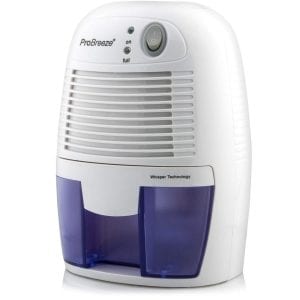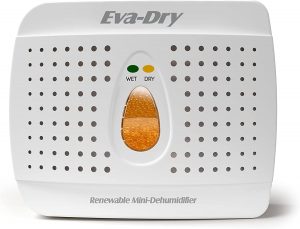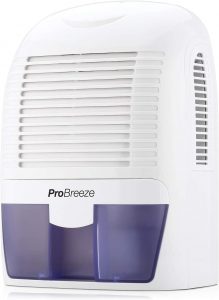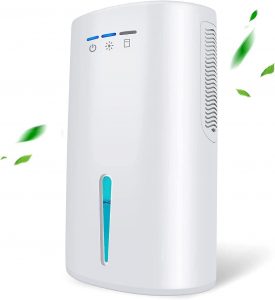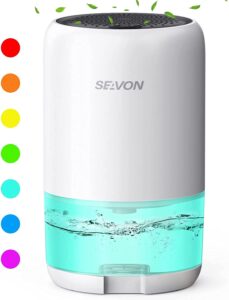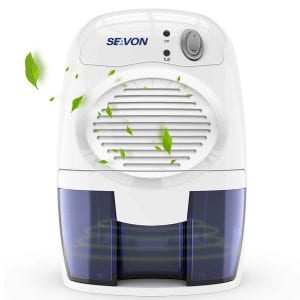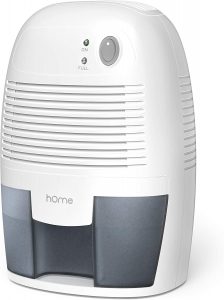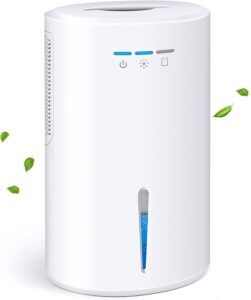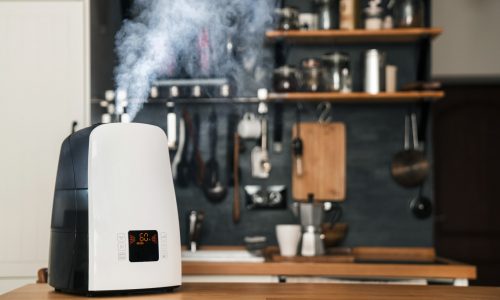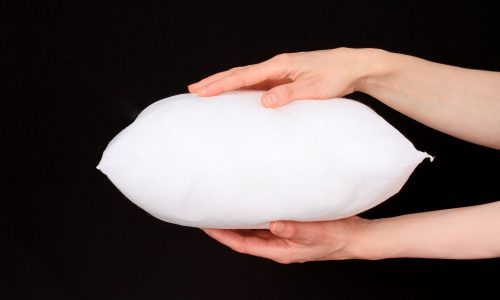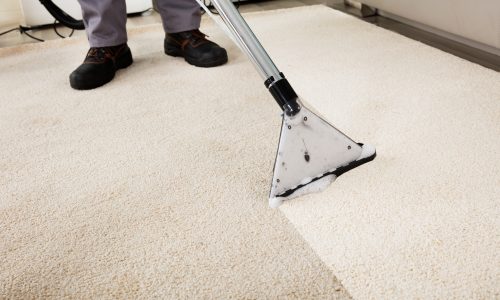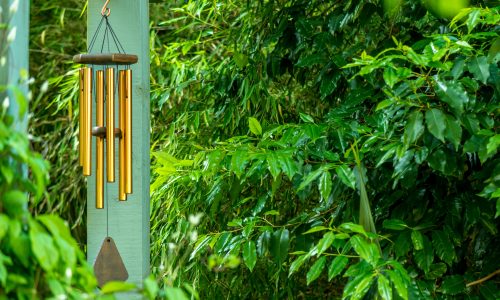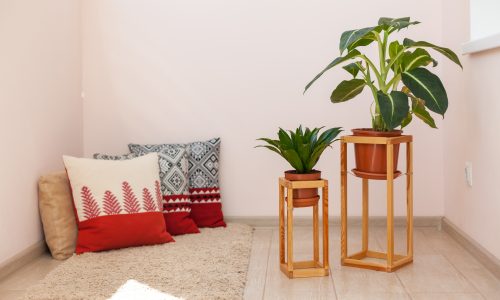The Best Small Dehumidifier
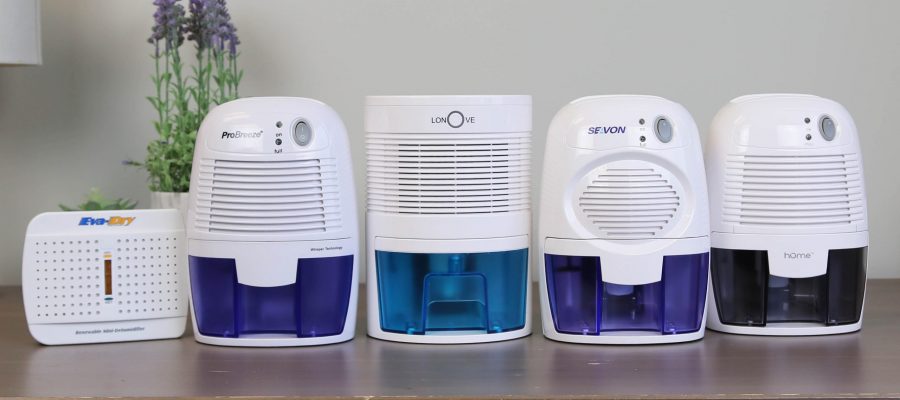
Our Review Process
Don't Waste Your Money is focused on helping you make the best purchasing decision. Our team of experts spends hundreds of hours analyzing, testing, and researching products so you don't have to. Learn more.
Our Picks For The Top Small Dehumidifiers
- 1. Pro Breeze Small Dehumidifier With Auto Shut Off, 16-Ounce
- 2. Eva-Dry Mess-Free Small Dehumidifier, 6-Ounce
- 3. Pro Breeze Lightweight Small Dehumidifier, 52-Ounce
- 4. Gocheer High-Efficiency Silent Small Dehumidifier, 68-Ounce
- 5. SEAVON Automatic Shutoff Sleep Mode Small Dehumidifier, 35-Ounce
- 6. SEAVON Lightweight Small Dehumidifier, 16-Ounce
- 7. hOmeLabs ETL Certified Small Dehumidifier, 16-Ounce
- 8. COSVII High-Efficiency Small Dehumidifier, 68-Ounce
Thanks to this small dehumidifier's built-in thermo electric cooling technology, it runs nice and quiet. The water tank can hold up to 16 ounces of moisture at a time. It also has a handy LED light that lets you know when it's time to empty the tank.
Easily PortableYou won't have any trouble moving this small dehumidifier from one room to another, as it weighs just 2.4 pound.
Homes with children and small pets would do well with this small dehumidifier. This unit is non-toxic and spill-proof, as it uses silica gel technology to trap moisture instead of a water tank. All users have to do is watch for the silica beads to turn from orange to green to know when the unit is ready to be refreshed.
Child- and Pet-SafeThis small dehumidifier runs without batteries or electric and only uses electricity to reset.
This small dehumidifier is easy to set up anywhere you have too much humidity, including an attic, bedroom, bathroom or office. Although the unit is compact, it's still able to cover a 250-square foot area. Users will appreciate the how quietly the unit runs, as well as the automatic shut-off for added safety.
Use AnywhereSince this small dehumidifier has a large 52-ounce water tank, it only needs to be emptied once every three days.
Since this small dehumidifier is portable, you'll be able to easily move it from room to room, or even use it in an RV. It runs quietly and features a large 2,000-milliliter water tank, which means you won't have to empty it as often. In addition to being designed to extract large amounts of moisture, this unit also runs efficiently, so you don't e...
Maximum Water ExtractionThis small dehumidifier is able to accommodate a room as big as 680 square feet.
Buying Guide
Dehumidifiers offer several benefits including creating a healthy atmosphere for you to breathe in and reducing the level of moisture in a room to prevent mold and mildew growth. If you don’t need to reduce the moisture in your entire home, you have the option of purchasing a small dehumidifier for certain areas of your home that excess moisture, such as a bathroom, basement or closet.
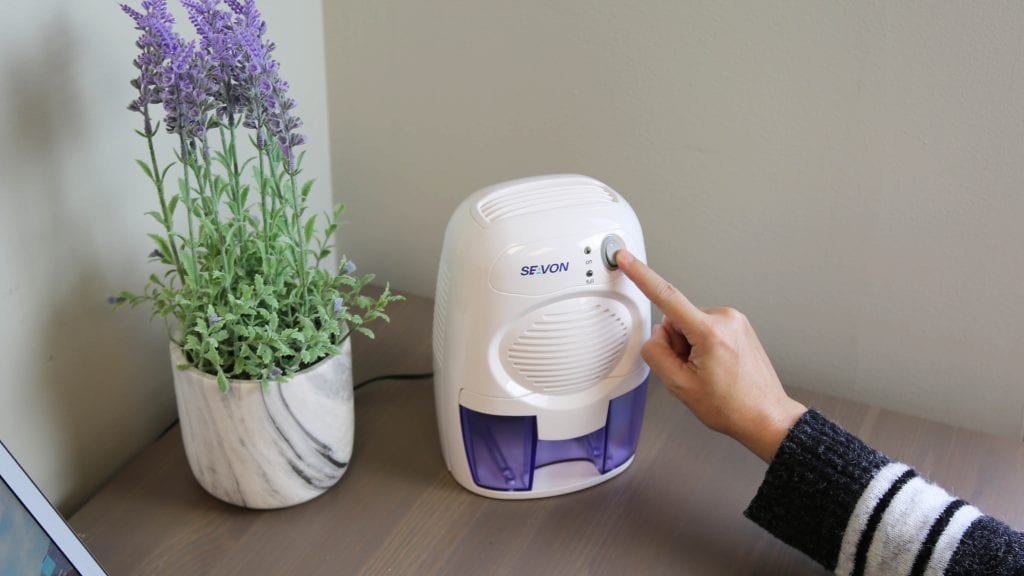
Determine which type of small dehumidifier would work best in your home. The most common model remains plugged into an electrical outlet and collects water in a water reservoir that you must empty fairly frequently. Another option is a unit like the Eva-Dry Renewable Mini Dehumidifier, 6-Ounce, which traps moisture in silica gel beads. It’s great for homes with kids and pets, as it is non-toxic, doesn’t need to be plugged in to operate and doesn’t have a water tank that can spill.
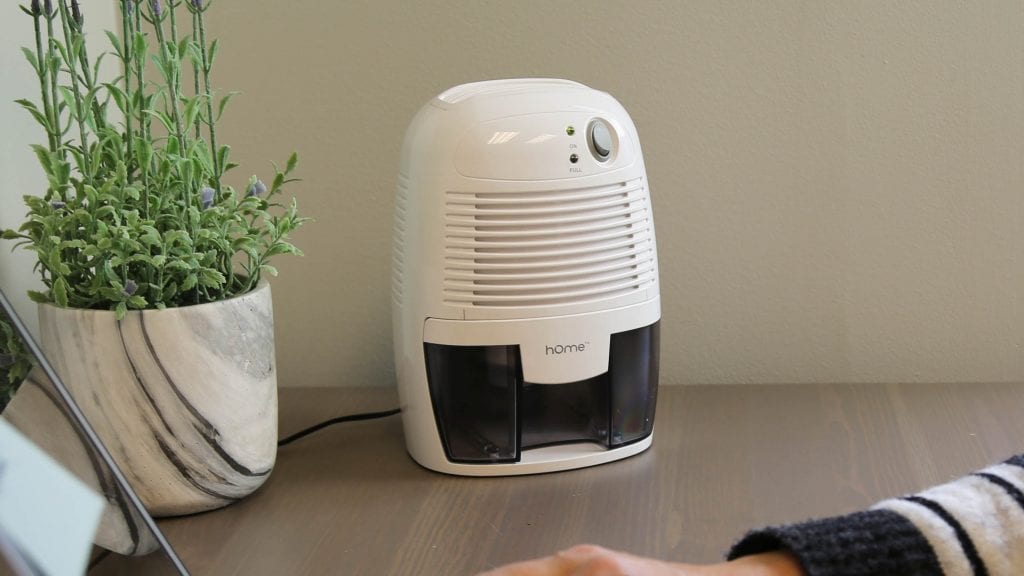
Of course, if you have toddlers or babies in the home, you also need a small dehumidifier that runs quietly. Look for a model that utilizes thermoelectric cooling technology to get the job done without a noisy compressor.
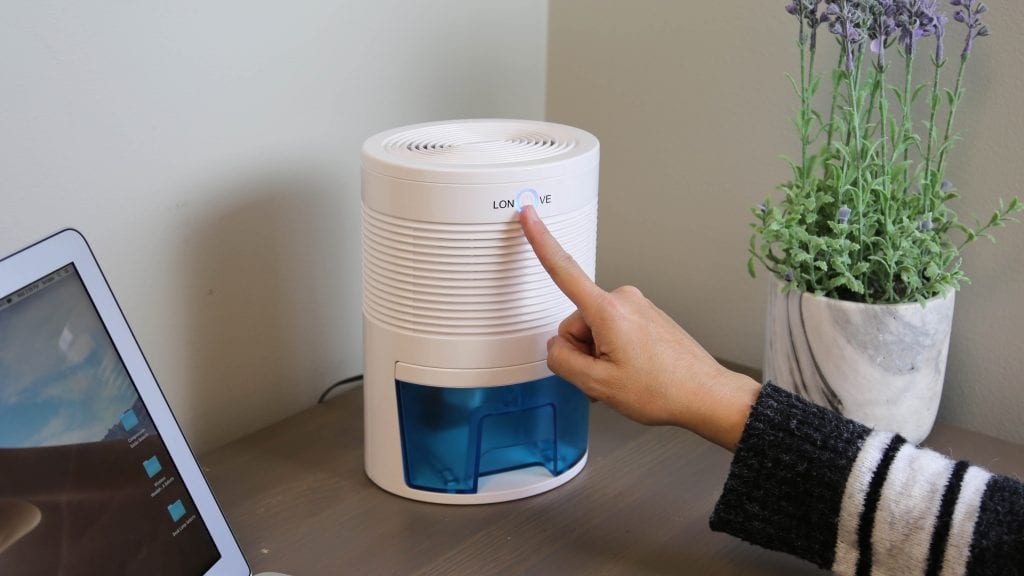
Next, make sure the machine is easy to use. For example, some options have a simple power button and an automatic shut-off that kicks in when the water tank is full.
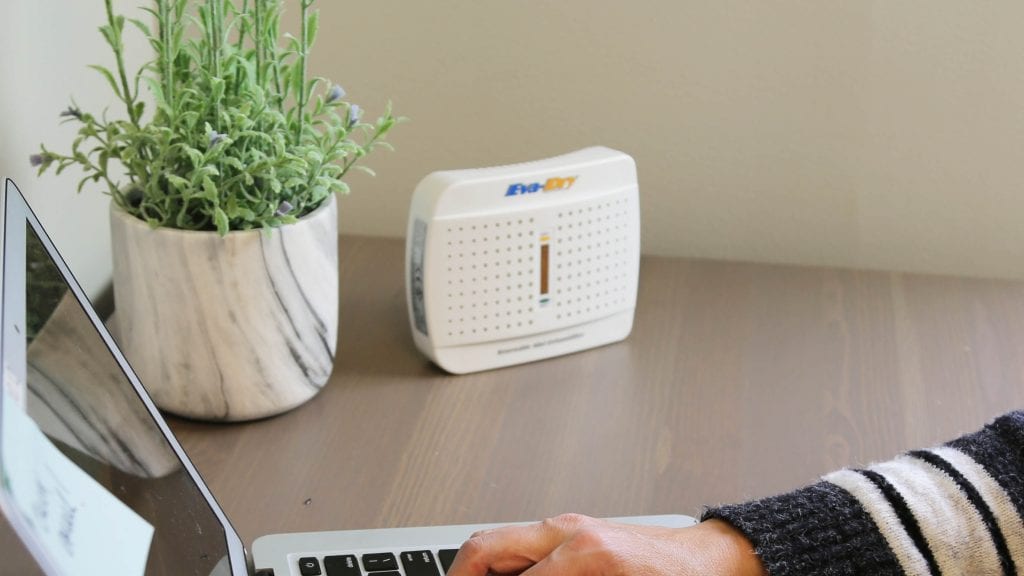
Don’t forget to check that the small dehumidifier is able to cover the space you intend on using it in. If the space is too big, the unit won’t be able to keep up.
What to Look For
- Do not place a small dehumidifier in a room that is larger than the recommended square feet on the product label. It will not be able to keep up.
- Some small dehumidifier models have water tanks that can spill or leak when overfilled.
- It is important to note that small dehumidifiers are not able to can’t keep up in conditions where moisture levels continue to increase.
- Small dehumidifiers work best in areas that have a temperature reading of 59 to 86 degrees Fahrenheit. If temperatures are below 41 degrees Fahrenheit, they will not work at all.
- Always unplug your small dehumidifier before you clean it. You’ll want to wipe down the outside of the unit, wash the water reservoir with a little dish soap and warm water and rinse out the air filter. Wait for the air filter to dry before reinstalling it.
More to Explore
Did you know that common allergens, like dust mites, mold and mildew need moisture and humidity to grow? That’s why individuals who live in more humid climates tend to have more allergies than people who live in areas with cooler temperatures and drier air.
To combat this problem, American inventor William Haviland Carrier created the first dehumidifier. You may already know Carrier as the “father of air conditioning,” but he actually came up with the dehumidifier first. Carrier was a brilliant man with a mind for engineering, who held as many as 80 patents for his inventions over the course of his lifetime.

